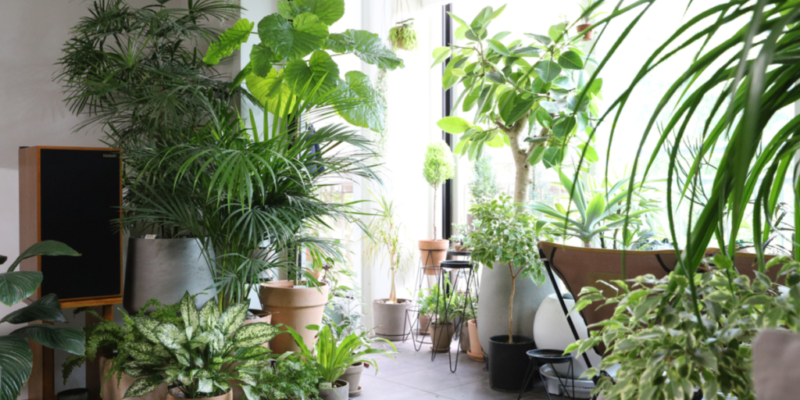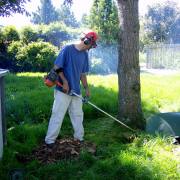Potted plants can be heavy. After all, they’re weighed down by a container full of soil, even before you consider the weight of terracotta or ceramic pots.
So when you’re moving house and want to take the large plants you’ve cared for and nourished with you, you may not know where to start. Preparing fragile plants to be moved, packing them safely and transporting them to your new home can be stressful for plants. But there are some things you can do to make it easier (for you and the plants!)
While you’re here check more large plants from Gardeners Dream.
Top Tips
- Plan ahead and gather suitable packaging materials, such as newspaper and bubble wrap, in advance.
- Check if your moving company are happy to transport large plants in the truck. Some movers might refuse due to the risk of breaking or killing the plants, meaning you’ll have to take them in your own car.
- A plant caddy is a worthwhile investment for moving plants. The pot sits on top of the frame, which has wheels, making moving larger plants a lot easier.
Before Moving Day
Moving heavy plants takes an element of planning, and there’s no such thing as too much preparation. The more organised you are, the easier the move will be and the more likely the plants are to survive and flourish in their new home.
Re-Pot Fragile Pots
To minimise the risk of a favourite pot getting broken in transit, re-pot larger plants into plastic pots. Use bubble wrap and/or foam packing peanuts to protect large pots and stow them safely in a cardboard box. Re-potting is best done at least three weeks before moving day. Otherwise, you risk shocking the plants.
If the root system allows space, consider making the pots lighter by adding foam packing peanuts and landscape fabric under the potting mix.
Prune the Plants
Prune back dead or damaged stalks and branches, and trim off brown leaf tips before packing plants for moving. Check for pests (which you don’t want to move into your new pad with you!) and generally tidy up the plant. Doing this boosts the plant’s health, making it more likely to survive the move.
For a particularly large plant you might consider giving it a hard prune. While doing this affects the appearance of the plant, it does make it lighter and, therefore, easier to move. And it will grow back eventually!
Take a Cutting
Sometimes, despite your best efforts, a plant just won’t survive a house move. For this reason, it’s worth taking cuttings of favourite or sentimental plants before you go. If, for whatever reason, the plant doesn’t recover from being moved you can re-grow the same plant in your new home.
Water Your Plants
Give your plants a thorough drink three days before you leave for the new place. Doing this ensures the soil is moist enough for the plants not to get stressed from lack of water and helps prevent water from leaking through packaging and making a mess. Watering a few days before the move also ensures the soil isn’t wet and water logged, which makes the plant even heavier to move.
How to Pack Larger Potted Plants for Moving
Once you’ve gathered everything you need and all your other stuff is safely packed up and ready to move, it’s time to package your potted plants.
- Cover the soil with newspaper and place a plastic bag around the pot. Tie the bag closed or secure it with a rubber band. Doing this will stop any soil spillages from escaping and help to keep your car or van clean.
- If possible, place plants in a box and pack around them with newspaper, leaving some space for air circulation without too much wiggle room. Wrapping very big plants in landscape fabric or horticultural fleece helps protect those that can’t fit in boxes.
- Be mindful of the temperature in the car or moving truck. Most plants don’t cope well with extremes of heat or cold, so consider the time of year and add extra insulation or open a window as required.
- Ensure any boxes are marked clearly, stating they contain live plants. Write ‘Fragile’ or ‘This End Up’ so everyone knows they’re not to get bashed around.
Moving a Heavy Pot Plant
The trickiest bit of moving with large plants is often physically lifting and transporting them. If your moving company is happy to accommodate your greenery, then all good. Let them crack on and work it out. However, if you’re moving the plants yourself you’ll need to figure out the best way to lift, carry and transport them.
Lifting
Lifting a heavy potted plant or tree is a two-person job. Thankfully, if you’re moving house, you’ll likely have other people on hand to help bear the load. If you’re using a caddy, trolley or dolly, the pot should only need to be lifted a few cm from the ground and placed on top.
Carrying
Even light boxes can get tiresome during a house move. Make things easier for yourself by using wheels to move plants in really large pots. Borrow or buy a moving trolley or wheeled plant tray to help prevent injury from carrying heavy plants.
Transporting
As mentioned above, many removal companies refuse to transport live plants. But when you consider how dark, hot/cold, dry and airless a moving lorry can be, it isn’t necessarily a bad thing. Transporting plants in your own vehicle is much preferable.
Car windows let more light and air circulate, which is essential for plant survival. You can also control the temperature more easily and keep a closer eye on them. Moving plants yourself also reduces the amount of time they spend in transit. You can load them into the car right before you leave and unpack them as soon as you arrive.
At Your New Home
When you arrive at your new place, unpack the plants quickly, positioning them in spots similar to their old ones. Allow them plenty of indirect light and water them if required.
You may be desperate to return plants to those favourite pots you carefully packed away. However, it is best to leave re-potting for a couple of weeks to give the plants time to settle into their new environment. After all the hassle you went to getting them to your new home, the last thing you want to do is stress them further.
The leaves of some plants might start to yellow, but this isn’t necessarily anything to worry about, so don’t be tempted to prune them off. Doing so will cause the plant to go into growth mode, which can put additional stress on it. Yellowing leaves are often a temporary symptom of stress, and larger potted plants should adapt to their new surroundings in a few weeks.
Moving house is stressful for people. And while potted plants don’t have to worry about title deeds, rent deposits, mortgages, solicitor letters, cleaning, movers, and picking up the keys on time, they can also get stressed from the experience of moving to a new residence.
Taking the time to package them carefully prevents delicate plants from becoming damaged and helps them settle well when they reach your new address.














Comments